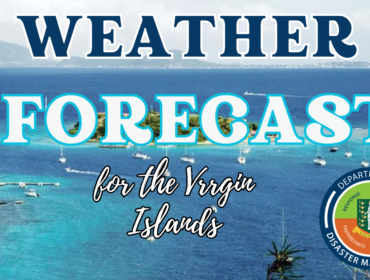TERMS
OF REFERENCE
CAPTURE
OF FLOOD BASELINE DATA FOR SEA COW’S BAY
TORTOLA,
THE VIRGIN ISLANDS
1.0
PROJECT BACKGROUND
The Virgin Islands is an
archipelago consisting of some 60 islands, mostly small and uninhabited, with
four principal population centres namely Tortola, Virgin Gorda, Anegada and
Jost Van Dyke. This uncommon geographical feature highlights the need to have
creative approaches to the Territory’s disaster management system. Given the
variability in the impact of hazard events on the Territory, communities that
are not frequently or severely impacted can sometimes be inadequately prepared
to cope with an emergency or a disaster.
Additionally, as there is no sense of immediate need, disaster risk
reduction is rarely a priority in these communities. However, in order to
achieve vulnerability reduction within the Territory, communities must be
prepared to deal with disasters that may affect them.
Community-based disaster risk
reduction allows us to prepare for and respond to potential hazards following a
disaster event. As individuals, we can prepare our homes and families to cope
during that critical period. Through pre-event planning, communities can also work
together to help reduce injuries, loss of lives, and property damage as well as
preserve livelihoods, the environment and the overall quality of life of
residents. Community disaster risk
reduction will enhance the ability of individuals, and groups of people, to
reduce their emergency needs and manage their existing resources until other
assistance becomes available.
Best practices in the disaster
risk reduction field indicates that community resilience can be achieved by
getting all components of the community (businesses, church groups, community
partners, school children and residents) to understand the hazards they face;
identifying ways to reduce or mitigate hazard impacts and providing tools and
training which allow the community to adequately prepare for and respond to any
disaster.
Several methodologies (Hazard Risk
Assessment and Quantitative Risk Assessment), hazard maps created through the R3i
Project, the Red Cross Strategic Targeting Methodology (STM) as well as impact
data ranks Sea Cow’s Bay within the top two highly vulnerable communities on
Tortola.
Sea Cow’s Bay is located
approximately 2.5 miles (4km) west of the main commercial hub, Road Town, on
the island of Tortola. The boundaries of
the community extend generally from the Pieces of Eight and Mantee Developments
in the east, to Nanny Cay in the west, and from the sea inland to Treadfall and
Nibbs Estate. Sea Cow’s Bay is a rather
large bay separated from Sir Francis Drake Channel by areas of coral reef found
on each side of the opening. The shallow
reefs provide shelter from high seas and therefore the waters within the bay
are usually very calm. The bay is
shallow with a maximum depth of seven feet and an average depth of five
feet. Sea Cow’s Bay is also home to one
of the largest mangrove systems in the Territory and in 1990, it was categorised
as being of critical importance based on ecological and socio-economic
factors. The population of this
community is approximately 2,221 based on the last census statistics which represents
an increase of more than 300% since 1991. The community is a modest one,
primarily with residential developments that within the last ten years have seen
the emergence of low-income clusters.
Inland flooding has historically
affected the Sea cow’s Bay community causing significant losses to residents. Adequate planning and appropriate response to
flood events necessitate the capture of baseline information which can then be
utilised in conjunction with the existing hazard layers in the National Geographic
Information System (NGIS) to better understand the characteristics that
contribute to the flood impacts on this community. These characteristics include ghuts, drains,
bridges and crossings.
Funding for the development of
this profile will be provided by the Caribbean Disaster Emergency Management
Agency (CDEMA) under the Mainstreaming Climate Change in Disaster management in
the Caribbean Project: Phase 2 (CCDM-II).
2.0
OBJECTIVES OF ASSIGNMENT
The overall aim of this assignment is to capture drainage data within the Sea Cow’s Bay
Cadastral Section of Tortola to support flood mapping activities that will
better guide land use, inform development practices and support response actions
if or when a flood event occurs.
3.0
SCOPE OF WORKS
The Consultant will report to the Director, Department of Disaster
Management and will work under her supervision.
Specifically, the Consultant will be required to:
3.1
Prepare a Work Implementation
Plan that demonstrates a clear understanding of the assignment, detailing the:
3.1.1
Proposed Work Schedule with
timelines and methodology;
3.1.2
Proposed Budget; and
3.1.3
Material or resources required
3.2
Apply the following techniques
to allow for the capturing of data related to the characteristics of ghuts,
drains, bridges and crossings in the Sea Cow’s Bay Community including (where
relevant) names, description, diameter, length, width, depth, description,
photocodes and images.
3.2.1
Ground Truthing
3.2.2
Data Processing and
Verification
3.3
Incorporate the findings within
the National GIS and present evidence of the improved flood hazard layers.
4.0
DELIVERABLES
4.1
Work Implementation Plan;
4.2
Evidence of improved hazard
layers.
5.0
INPUTS OF THE DDM
The Department of Disaster Management will provide:
5.1
Copies of Existing NGIS Layers
for the Sea Cow’s Bay Cadastral Section.
5.2
Technical comments and feedback
on the data capture;
5.3
General oversight in the roll
out of the consultancy.
6.0
REQUIRED SKILLS AND EXPERIENCE
6.1 Qualifications and Experience
§ Master’s degree in Surveying, Engineering of Geographic Information
Systems or equivalent qualification.
§ At least three (3) years experience in the areas of hazard
mitigation.
§ Experience working in The Virgin Islands would be a distinct asset.
6.2 Knowledge and Skills
§ Ability to efficiently utilise GPS Units and Geographic Information
System
§ Ability to meet deadlines and prioritise multiple tasks.
§ Sound analytical and organisation skills.
6.3 Language Requirements
§ Must be able to speak English fluently.
7.0
TECHNICAL AND FINANCIAL PROPOSAL
7.1
Duration
The Consultancy
is estimated to be no more than 12 working days in total and the successful
candidate should be able to assume duties by 31 December, 2014.
7.2 Technical
Proposal
The
technical proposal should indicate at minimum:
i.
Proposed approach to be taken
for the roll out of the consultancy;
ii.
Curriculum Vitae of consultant
and for each member of the team (if a team approach is utilized).
7.3 Financial Proposal
The financial
proposal should have a detailed budget breakdown with man days for each team
member identified.
7.4 Evaluation
The Technical
Proposal will be assessed based on the consultant’s understanding of the TOR;
experience, demonstrated qualifications, knowledge and skills as well as the
detailing of a creative and guided approach to undertaking the consultancy. A maximum of 85 percentage points is
allocated for the technical proposal.
The financial proposal is allocated 15 percentage points and will be
assessed based on best value for money and the provision of a detailed budget
breakdown with man days for each team member.
8.0
APPLICATION
Proposals should
not exceed 15 pages in length (exclusive of CV and references) and must be
provided no later than close of business day on 15 December 2014. Further
information may be obtained from Philomena Robertson ([email protected]) at the
Department of Disaster Management.
Please send
proposals to the address below:
Attention: Ms. Sharleen DaBreo
Director, Department of Disaster
Management
#3 Wailing Road, MacNamara, Road Town
Tortola, VG 1110 Virgin Islands
Tel: (284)-468-4200
Fax: (284) 494-2024
Or via email to:
E-mail: [email protected]



